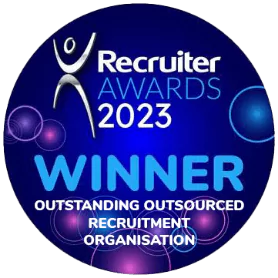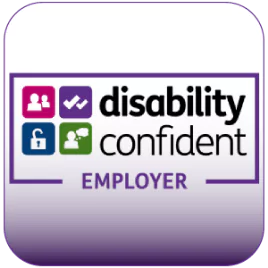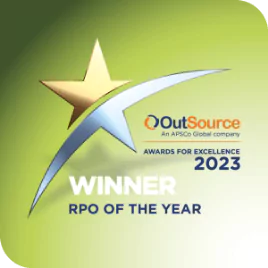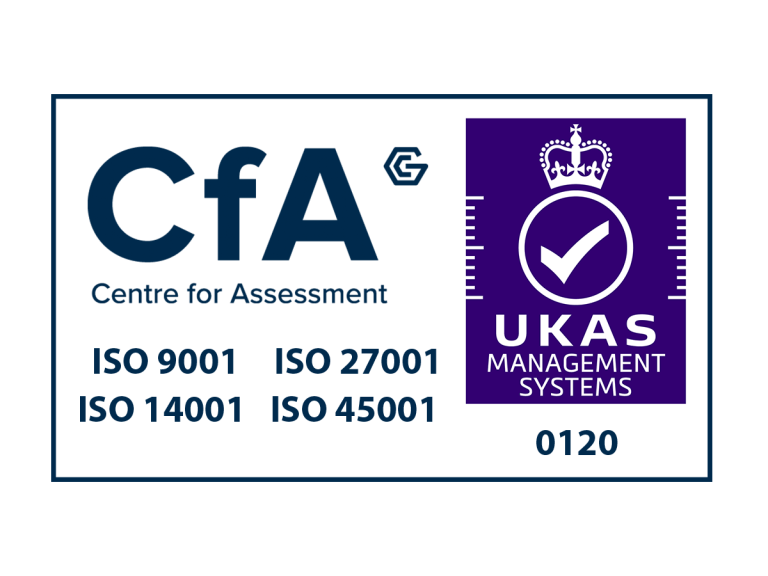Activating your employer brand to recruit and retain in a challenging climate




Amid an unstable economic outlook, organisations are still contending with skills shortages and require an authentic employer brand to help them recruit and retain valued employees. The Resourcing and talent planning report, produced with the support of talent strategy and recruitment specialist OmniRMS provides insights into what organisations should be doing to activate their employer brand.
In the following article, we delve into the current challenges in the labour market and explore recommendations from the report on how organisations can activate their employer brand to improve recruitment and retention in a challenging climate.
Employers and people professionals are grappling with particularly difficult shifts in the labour market. In the UK, this includes rising National Insurance contributions and increases in the National Living Wage, in addition to preparations for future changes in employment regulation. There are also growing global uncertainties to contend with, such as import tariffs.
The CIPD’s Labour Market Outlook – Spring 2025 data found that as some of these regulatory measures are being brought in, business confidence continued to fall. The net employment balance had fallen to +8, its lowest level on record outside of the pandemic. However, despite overall reductions in vacancies and recruitment intentions, organisations continued to wrestle with hard-to-fill vacancies in key areas and will increasingly need to focus efforts on retention.
Whether it’s niche or hard-to-fill vacancies or volume roles, the quest for top talent continues to present difficulties, with 69% of respondents to the Resourcing and talent planning survey indicating that competition has intensified over the past year, even as vacancy numbers have declined. Employers are having to differentiate themselves in ways that go beyond pay and benefits – ensuring they are visible to potential candidates, and with the right messaging on the most effective attraction platforms.
In addition to recruitment pressures, 56% of organisations reported growing concerns around employee retention. Individuals now place greater emphasis on work-life balance and personal wellbeing, making them more inclined to move on if these expectations are not met. In response, organisations must re-evaluate traditional approaches to the development of attraction and retention strategies if they want to successfully recruit and retain the talent they need to succeed.
As new generations enter the workforce with evolving expectations around careers and employers, and with platforms such as Glassdoor and LinkedIn providing easy access to insights about an organisation’s reputation, candidates are more informed than ever. Combined with the growing demand for flexibility and hybrid or remote working, organisations must develop authentic, advocacy-led strategies grounded in a deep understanding of what current and potential employees value. An employee-led employer brand and retention strategy enables organisations to deliver the right messages, on the right platforms, so they can attract and retain.
Looking at what your employees want is critical to any employer brand. Start with your people and find out what is most valuable to them. Employees value different benefits at different stages of their lives, so be flexible in your offering.
More broadly, we can also draw on the CIPD Good Work Index which provides an overview of what UK workers value from work, to determine how employers can enhance their brand. The key themes and findings are set out within the framework of the CIPD’s seven dimensions of good work, which have been recommended to the government as the optimal framework for measuring job quality in the UK.
It posits that employees should not only be fairly rewarded, but also have a good work-life balance, a sense of fulfilment and be given opportunities to develop. It also highlights the importance of fostering a healthy, supportive work environment with constructive relationships that gives all employees the voice and choice they need to shape their working lives.
But it’s important to be mindful in your attraction and retention strategies of providing a realistic overview of jobs, your working environment and brand offering to support retention. For instance, our Resourcing and talent planning report found that around two in five of those that selected candidates in the 12 months prior said new recruits always, mostly or sometimes resigned within the first 12 weeks.
In a competitive labour market, an appealing employer brand is critical for attracting and retaining talent, with four in five organisations taking some action to improve their brand according to our Resourcing and talent planning report. Expanding flexible working opportunities and making pay and benefits more competitive continued to be the most common initiatives, although there were sector differences.
The non-profit sector was notably likely to increase flexible working, while public sector organisations were less likely to take action to improve pay and benefits and more likely to refresh or promote their values.
There was a rise in the proportion that moved to develop a social media content strategy, improve candidate experience, the work environment and career development options, as well as attend career fairs or networking events, compared with our last survey in 2022.
Overall though, only 14% took steps to measure the impact of their employer brand which is a missed opportunity for evaluation and improvements.
Omni’s Talent Strategy Director Katie Noble says while attention is often given to designing an employer brand and building a comprehensive toolkit, the real value lies in activating that brand. Yet, activation is frequently the most overlooked phase, despite being the most critical for achieving long-term impact. To truly bring an employer brand to life, two elements must sit at the heart of any strategy: authenticity and advocacy. Here below are tips to ensure your employer brand not only exists, but thrives.
Successful brand activation starts with internal alignment. Employer branding is often owned by HR or talent acquisition, while the corporate brand falls under marketing or comms. Bringing these functions together ensures consistency in tone, style, and purpose.
Work collaboratively to:
A unified approach not only strengthens authenticity but also ensures a consistent candidate experience across all channels.
The most impactful employer brands are rooted in real people and real experiences. Where possible, avoid using stock imagery or overly polished content.
Instead, prioritise:
Authenticity resonates more than perfection. While high-end production can look great, it can also feel detached from the true employee experience. Real voices build real trust.
Your employees are your most powerful brand ambassadors. LinkedIn reports that personal posts often receive significantly more engagement than content shared by company pages.
To harness this potential:
Understand and map your candidate touchpoints – from awareness to onboarding as this is vital to delivering consistent, timely messaging. Ensure your employer brand is visible and relevant at each stage:
Finally, don’t underestimate the role of technology in amplifying your brand. Programmatic or geo-targeting tools can help automate and distribute your content across multiple platforms, adjusting messages based on engagement and performance. This not only extends your reach but ensures you connect with diverse talent in meaningful ways.
Omni’s award-winning Resourcing Effectiveness Assessment (REA) is a rapid and flexible audit of an organisation’s resourcing maturity. It’s designed to quickly understand strengths and areas to improve, giving actionable recommendations to drive success..
Take the REA today to determine how to elevate your hiring strategy.
About the authors
Claire McCartney, Policy and Practice Manager, CIPD
Claire is a senior adviser specialising in the areas of equality, diversity and inclusion, flexible working, resourcing and talent management. She has also conducted research into meaning and trust at work, age diversity, workplace carers and enterprise and has worked on a number of international projects. She is the author of numerous reports and articles and regularly presents at seminars and conferences.
Katie Noble, Talent Strategy Director, Omni RMS
Katie is a strategic recruitment leader with over 25 years’ experience in the resourcing and talent management space. Her experience spans across multiple industries, designing and delivering innovative solutions to hiring and retention challenges. In her current role heading Omni’s Talent Strategy division, Katie partners with in-house talent acquisition, HR, and recruitment teams to transform their hiring practices.

Omni’s EDI Training for Leadership Teams covers the value of leading teams inclusively, how leaders impact an organisation’s EDI agenda, barriers hindering an inclusive culture, addressing unacceptable behaviours, the complexities of microaggressions, the implications of being a bystander, and understanding laws protecting employees from discrimination.
Omni’s training covers understanding potential discrimination areas during recruitment, recognising bias and its impact, avoiding discrimination, implementing positive action and diversity strategies, making reasonable adjustments, objective shortlisting and selection through evidence-based decisions, and structured interview techniques with appropriate questions.
Omni offers tailored training programs in various formats, including face-to-face, live virtual workshops, and eLearning modules, to meet your business objectives. With a satisfaction score of over 95% and clients returning year after year, Omni has a proven track record of delivering high-quality training that meets organisational needs.
At Omni, we prioritise an evidence-based approach that ensures reliable and effective assessment processes. Our team of expert Organisational Psychologists brings extensive experience in designing and delivering robust assessments that are inclusive, skills-focused, and tailored to your unique organisational needs. We also offer flexibility and support throughout the assessment process, ensuring successful implementation and tangible results.
Our assessment solutions are designed to elevate your hiring process by identifying the best candidates based on their skills, potential, and fit for the role. We help you define the critical competencies required for success, develop tailored assessments that accurately evaluate these competencies, and provide deep insights into candidates’ aptitude and personality traits. This evidence-based approach improves productivity, reduces turnover, and ensures a positive candidate experience. There are several benefits that personality profiling can bring to the recruitment process, such as supporting inclusive hiring, improved decision making, and increased efficiency.






